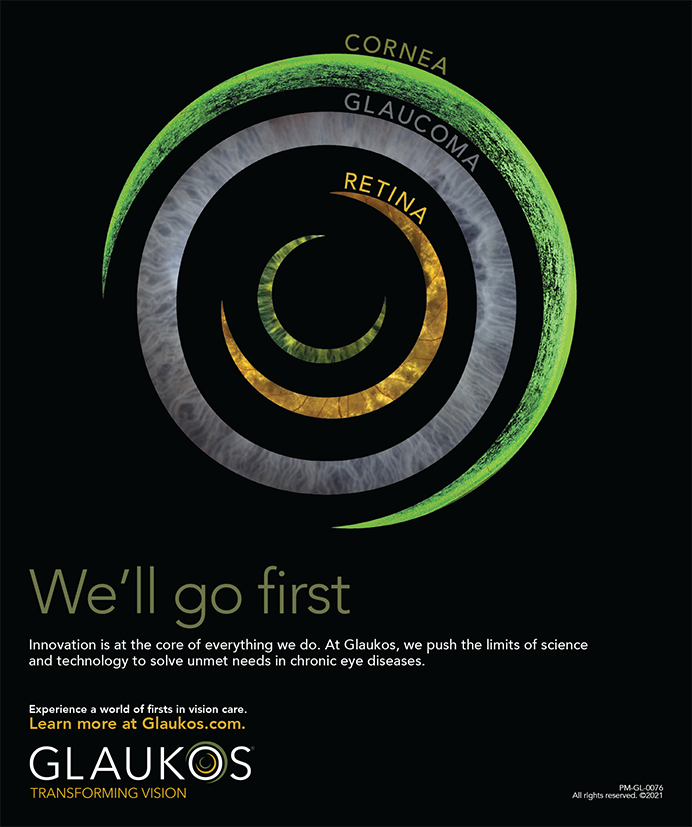The single-piece AcrySof Natural IOL (Alcon Laboratories, Inc., Fort Worth, TX) is the first foldable, blue-light–filtering lens. As such, the IOL closely mimics the transmission spectrum of the natural human crystalline lens. A yellow chromophore covalently bonded to the acrylic lens material filters, not only ultraviolet light, but also higher-frequency blue light. Theoretically, filtering blue light protects the retina from that light's damaging, high-frequency waves.
DAMAGING EFFECT OF LIGHT
Both blue and ultraviolet light have short wavelengths that possess high-energy photons capable of inducing photochemical change in the absorbing system. For example, when photoreceptors or the retinal pigment epithelium (RPE) absorb blue light, high-energy photons can lead to the production of reactive oxygen species that harm photoreceptor cells. Damage from light to these cells creates a greater phagocytic load on the RPE and more debris within Bruch's membrane.1 The buildup of debris within the RPE and Bruch's membrane is common to all forms of age-related macular degeneration.
AGE AND PIGMENTATION
Pigmentation of the human lens is a function of age. Newborns possess an intense yellow pigment in their crystalline lenses that protects their retinas during early development.2 That yellow pigment fades, and a new yellow pigment then develops throughout the rest of these individuals' lives. The yellow pigment that appears as a transparent coloration to the crystalline lens of a person in his early 20s visibly intensifies as he matures, particularly when he reaches his 40s to 50s. This pigmentation offers excellent protection for the retina against harmful wavelengths of light.
Current IOLs do not block wavelengths greater than 400 nm. As a result, they actually transmit the hazardous blue-light wavelengths that were deterred in the phakic eye, but, theoretically, an IOL should decrease the transmission of light in the 400- to 500-nm range in order to protect the retina.
IMPLANTATION
The insertion technique for the AcrySof Natural IOL is similar to that of the AcrySof Single-Piece SA60AT IOL. The only difference to note is that the surgeon can more easily view the AcrySof Natural lens when loading it into the cartridge and during injection due to the IOL's yellow coloration (Figures 1 and 2).
CONCLUSION
Trials of the AcrySof Natural IOL have shown that it filters out high-frequency and potentially damaging blue-wavelength light. They also showed that the IOL delivers to patients the same visual acuity in terms of brightness, clarity, and color perception as the AcrySof lens we are already using. There are therefore no drawbacks to using the AcrySof Natural IOL, and the potential upside of implanting this lens is significant.
Robert Cionni, MD, is Medical Director of the Cincinnati Eye Institute in Ohio. He is a consultant for Alcon Laboratories, Inc. Dr. Cionni may be reached at (513) 984-5133; rcionni@cincinnatieye.com.
1. Marshall J. The aging retina: physiology or pathology? Eye. 1987;1:282-295.
2. Lerman S. Radiant Energy and the Eye. New York, NY: MacMillan; 1980.


